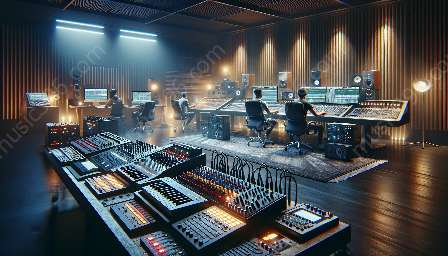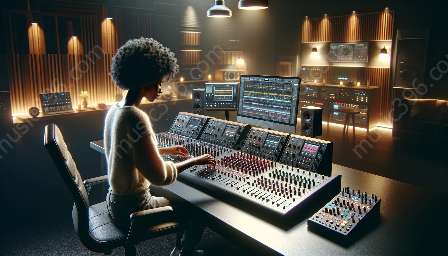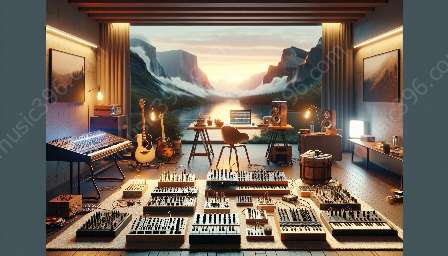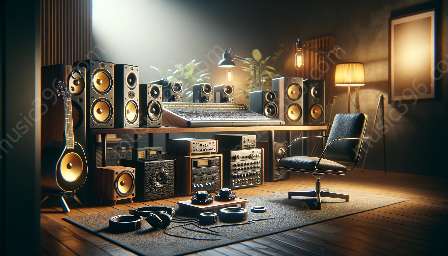Sound insulation and noise control are essential aspects of acoustic engineering and music technology, aiming to manage and mitigate the transmission of sound waves. In this comprehensive guide, we'll explore the fundamental principles behind sound insulation and noise control, their applications in various settings, and how they contribute to creating optimal acoustic environments.
Understanding Sound Insulation
Sound insulation refers to the ability of a structure or material to reduce the transmission of sound from one area to another. It is crucial in architectural design, construction, and engineering to minimize the impact of exterior noise on indoor environments, as well as to prevent sound leakage between different spaces within a building.
Key Principles of Sound Insulation:
- Mass: Increasing the mass of a structure can effectively reduce the transmission of sound waves. Materials with high density, such as concrete, brick, or dense mineral wool, are commonly used for sound insulation in architectural and construction projects.
- Decoupling: Decoupling is the practice of isolating structural elements to prevent the transfer of vibrations and sound waves. This can be achieved through the use of resilient mounts, isolation pads, or floating floors and ceilings.
- Damping: Damping materials are designed to absorb sound energy and reduce the reverberation or resonance within a space. These materials, such as acoustic panels, foam, or rubber mats, are strategically utilized to minimize the impact of airborne and impact noise.
- Air Tightness: Sealing gaps, joints, and penetrations in building structures is essential to maintain air tightness, which significantly contributes to sound insulation. Proper sealing techniques, weather-stripping, and the use of acoustic sealants are imperative in achieving effective soundproofing.
Noise Control in Music Technology
While sound insulation primarily focuses on architectural and environmental considerations, noise control in music technology addresses the manipulation and management of sound within the context of music production, performance, and recording. This discipline encompasses a wide range of techniques and technologies aimed at reducing unwanted noise, enhancing sound quality, and creating optimal listening environments for musicians, producers, and audiences.
Applications of Noise Control in Music Technology:
- Acoustic Treatment: Applying acoustic treatment involves the strategic placement of sound-absorbing materials, diffusers, and bass traps in recording studios, performance venues, and home listening spaces. This helps control reverberation, reduce standing waves, and improve the overall acoustics within the environment.
- Noise Reduction: Advanced noise reduction algorithms and signal processing techniques are utilized in audio equipment and software to suppress background noise, hiss, and unwanted artifacts during recording and playback. This enables the capture and reproduction of cleaner, more transparent audio signals.
- Soundproofing: For live sound reinforcement and stage performances, soundproofing measures are employed to minimize sound leakage, control stage monitoring, and create a focused listening experience for performers and audiences.
- Environmental Noise Management: In outdoor music events and festivals, environmental noise management strategies are implemented to minimize the impact of external noise pollution, ensure compliance with local regulations, and provide an enjoyable sonic experience for attendees.
Integrating Principles into Real-World Scenarios
Applying the principles of sound insulation and noise control requires a comprehensive understanding of acoustics, materials science, and engineering principles. In architectural settings, acoustic engineers collaborate with architects and construction professionals to integrate soundproofing measures into building designs, incorporating specialized materials, structural configurations, and environmental considerations.
In music technology, sound engineers and producers employ a combination of acoustic treatment, electronic processing, and equipment design to achieve optimal noise control and sound quality in recording studios, live performance venues, and audio production facilities. This involves meticulous planning, measurement, and testing to ensure that the principles of sound insulation and noise control are effectively applied within each unique setting.
Conclusion
With the ever-growing emphasis on creating acoustically pleasing environments, the principles of sound insulation and noise control play a pivotal role in both acoustic engineering and music technology. By mastering these principles and their applications, professionals and enthusiasts in these fields can contribute to the creation of immersive listening experiences, minimize the impact of unwanted noise, and optimize the quality of sound reproduction in diverse settings.

























